Vive la France: A Visit to the Bibliothèque Nationale
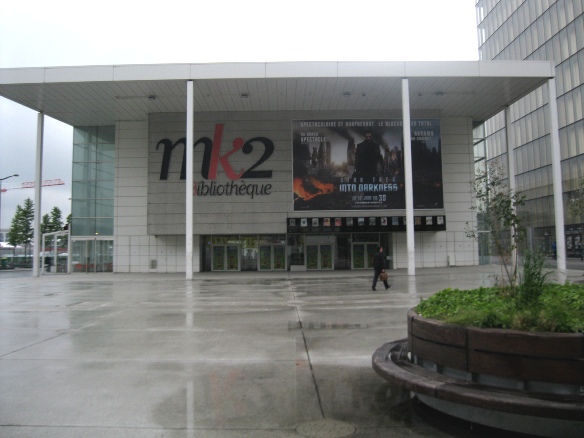
The Bibliotheque nationale de France in Paris is part of a modern complex of four office towers.
Depaire first arranged for me a visit and tour of the Bibliothèque nationale de France, a modern complex consisting of four office towers that is in stark contrast with most of Paris, and there I met with Annick Lorant-Jolly, chief editor of the Revue des livres pour enfants, and Nathalie Beau, who is in charge of France’s international affairs regarding children books. I learned that the business of children’s books is relatively young in France, with beloved French iconic characters created in America, such as Madeline, still barely known to French children. In fact, it wasn’t until the 1970s that children’s books began to come into their own in the country, with public libraries creating the first children’s sections. Beau herself was responsible for the first children’s library in Strasbourg (the capital of the Alsace region in eastern France, and seat of the European Parliament).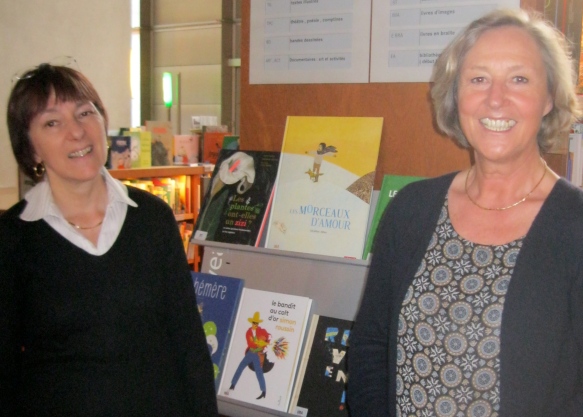
Annick Lorant-Jolly, director of the National Center for Children’s Literature, and Nathalie Beau, who is in charge of France's international affairs regarding children books.
At the moment, over half of the children and young adult titles in France are translations from other countries, with the United States well represented. Any American librarian would feel comfortable browsing bookstores and libraries and seeing such familiar covers and titles such as Jules Feiffer’s Aboie Georges! (Bark George! HarperCollins, 1999), John Green’s Nos Etoiles Contraires (Fault in Our Stars; Dutton, 2012), or Siobhan Vivian’s La Liste (The List; Push, 2012).
America has its share of “rock star” authors and illustrators such as Brian Selznick, Laurie Halse Anderson, and Mo Willems but I was surprised to learn that it is not the case in France.“There is something strange between childhood and adulthood,” Annick Lorant-Jolly told me. In France and other Mediterranean cultures, “childhood isn’t cherished in the same way" as in America, she said.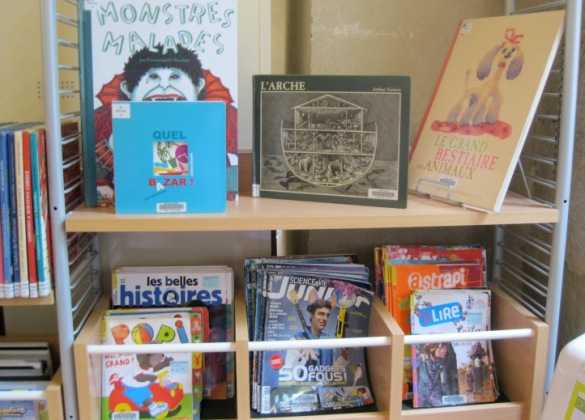
A display of children's reading materials in one of France's public library branches.
But that is changing with Le Genevrier, a publisher who is bringing the Caldecott Medal and Honor books to the French public for the first time. In what is called Caldecott Collection, it plans to publish many titles with a few notable changes. Robert McCloskey’s Blueberries for Sal (Viking, 1948) will be Blueberries for Lily, while the title of Lynn Ward’s The Biggest Bear (Houghton, 1952) has been changed to The Bear Who Loved the Maple Sugar.
Both Beau and Lorant-Jolly also shared several French authors and illustrators that are popular, some of which are available in English translations. Benjamin Chaud, an illustrator for young children, has with Ramona Badescu the “Pomelo” series, which is available in English from Enchanted Lion Books. Audrey Poussier is another popular illustrator whose titles are published in France by l’ecole des loisirs, who is celebrating its 25th anniversary as a publisher of children’s books.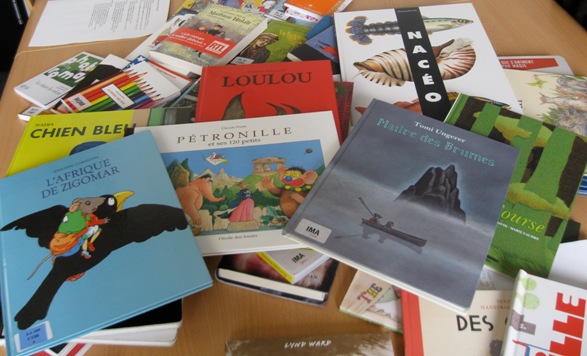
A collection of French children's books.
One of the most popular French children’s books of recent time is Chien Bleu (l’ecole des loisirs, 1989) by Nadja. Unfortunately, this magical tale—about a mysterious big, blue dog and the girl who befriends him—is difficult to find in English.
Graphic novels for all ages are abound in France and thanks to Toon Books, the popular Claude Ponti is available to American audiences with Chick and Chickie Play All Day! Many in the US are familiar with the illustrator, Olivier Tallec. He has created art for more than 50 books for children, including Waterloo and Trafalgar (Enchanted Lion Books) and the well-known “Rita and Whatsit” series (Chronicle Books). In 2010, Big Wolf & Little Wolf was chosen as a Batchelder Honor Book. Also known to American audiences is Popville (Roaring Brook, 2010) by Anouck Boisrobert and Louis Rigaud, a clever pop-up book that shows urban expansion. It was chosen a Best Book by Bank Street College in 2011.
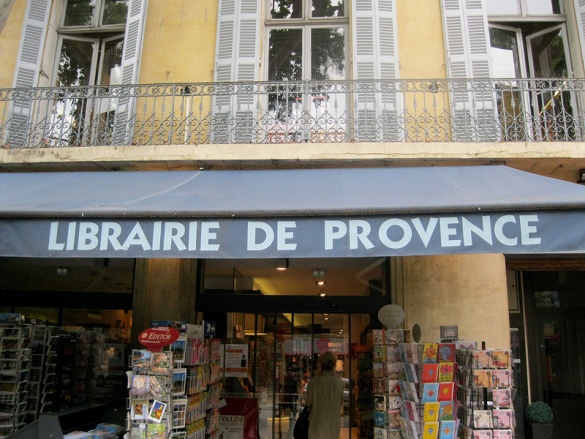
Bookstores, as well as libraries, throughout France are typically abuzz with activity.
One of the most popular children’s book authors for middle grades in France was born in Newark, NJ. Susie Morgenstern has written more than 70 books, and has been award the Mildred Batcheldor Award for literature first published in a language other than English for Sweet Letters from 0 to 10 (Viking 1998) and for Joker (l'ecole des loisirs, 1999). As in the United States, books for teens tackle serious subjects like self-discovery, deportation, and separation. Florence Aubry is one such author whose books have touched upon road rage, alcoholism, and unbridled sexuality. I was shown Le garcon talisman (Rouergue, 2012), a novel about an albino boy in Tanzania who is hunted because albino bodies are prized; in the book, it is believed their hair or a piece of their flesh can achieve incredible power. Notably, school libraries in France are mandated only on the secondary level, yet there is much collaboration with the public libraries on all levels. It was interesting to see that in many towns in France, the public library is house in historic buildings. Many of these buildings are older than the United States! Both bookstores and libraries were buzzing with activity that proved that an old French reading campaign still holds true, “Happiness Through Books." For a slideshow of the entire trip, click the photo below:
RELATED
The job outlook in 2030: Librarians will be in demand
The job outlook in 2030: Librarians will be in demand
ALREADY A SUBSCRIBER? LOG IN
We are currently offering this content for free. Sign up now to activate your personal profile, where you can save articles for future viewing






Add Comment :-
Be the first reader to comment.
Comment Policy:
Comment should not be empty !!!